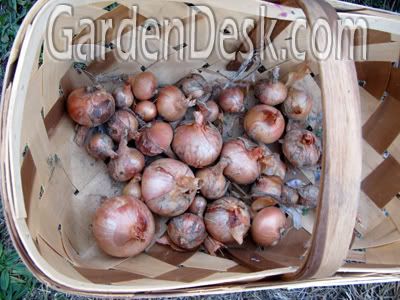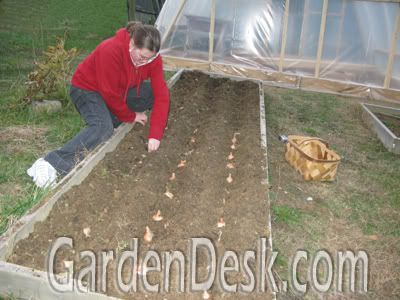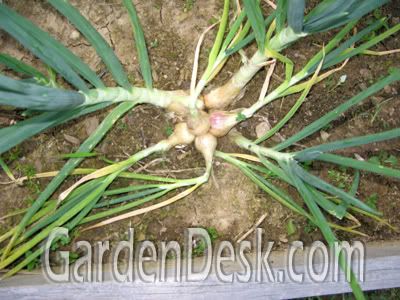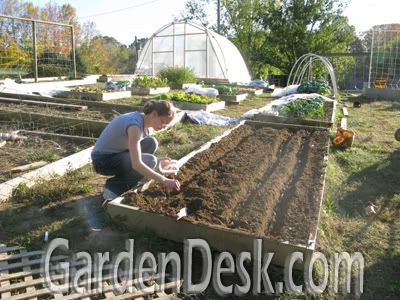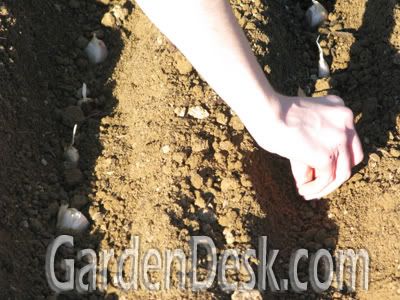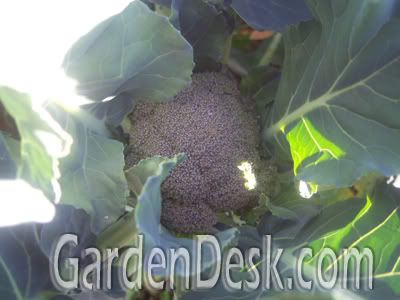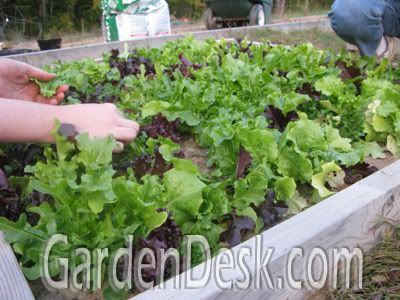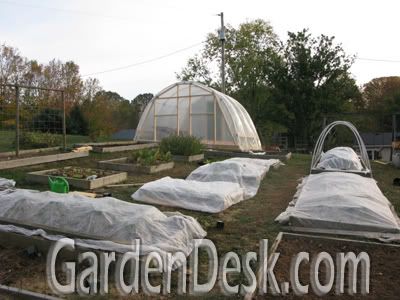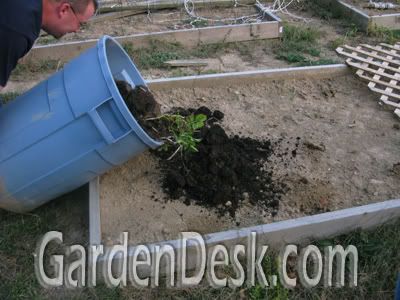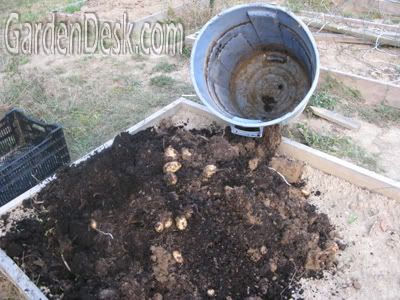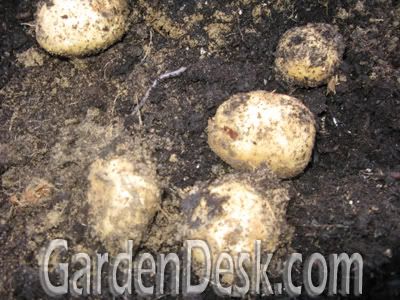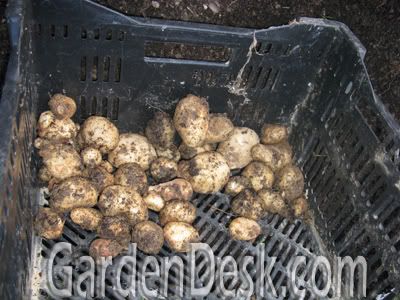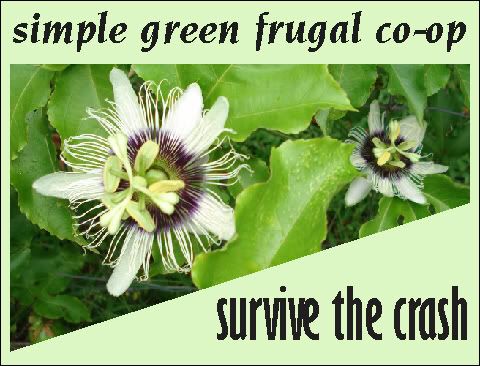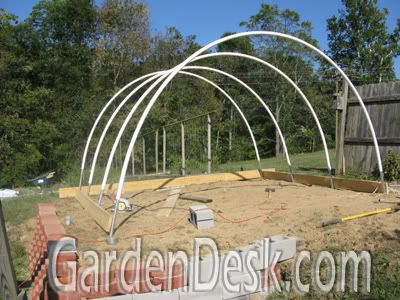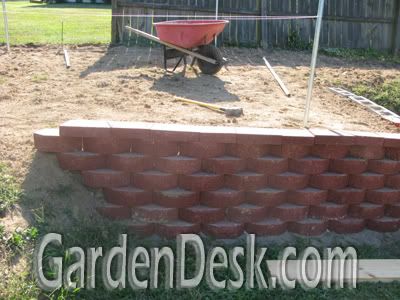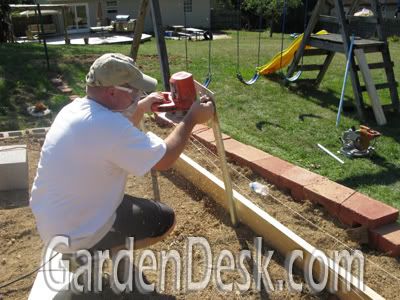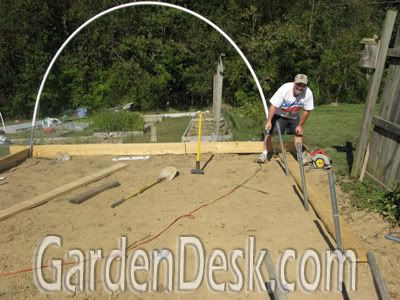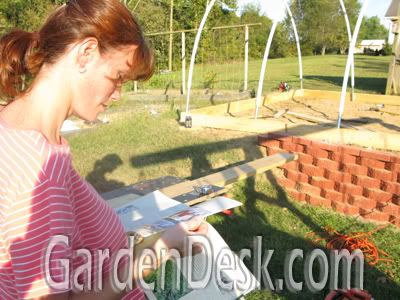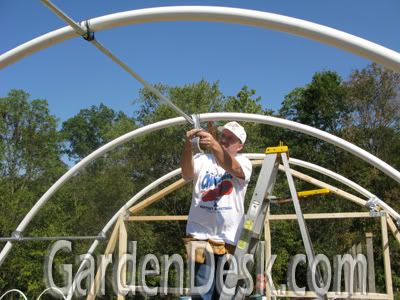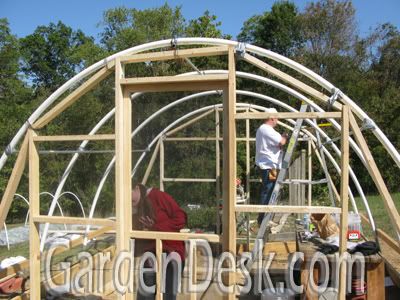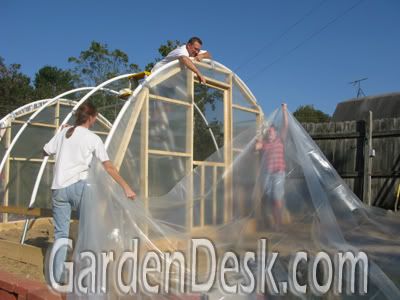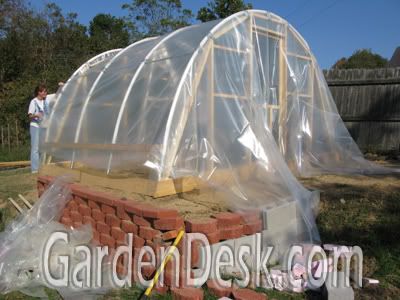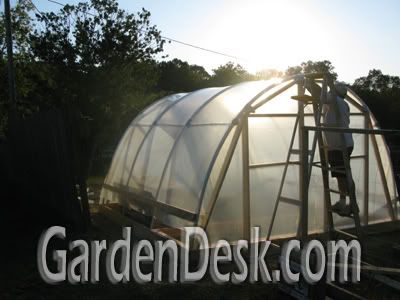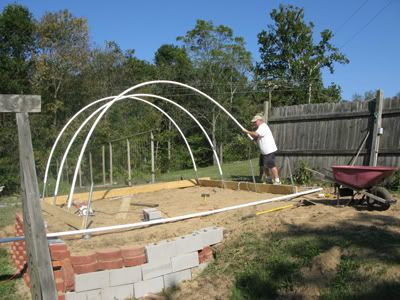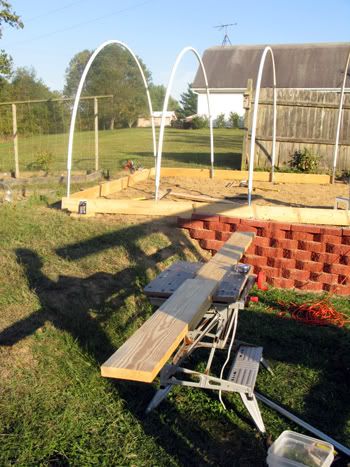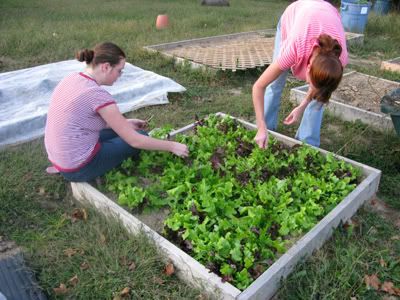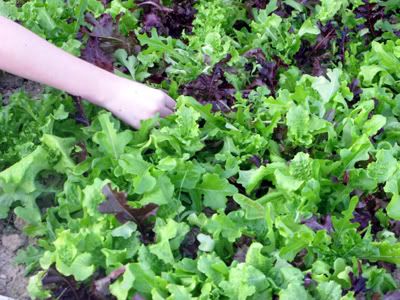I have wanted to have some kind of a greenhouse for the past 15 years but to buy a pre-built greenhouse that is big enough to turn around in costs many thousands of dollars. We have found that with many home improvement projects, it is much cheaper if you can do it yourself. So for the past year or so, I have been researching how to build your own greenhouse. I read many books and magazines and these are my favorite books about building a greenhouse, hoop house or poly tunnel and how to use them after they are built:
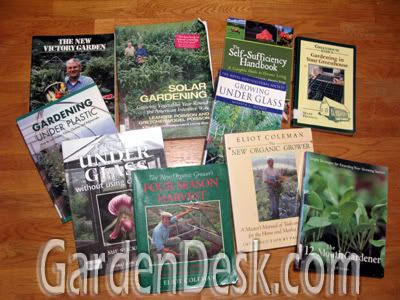
Some books speak only of how to use a greenhouse structure but the best are those that teach all of that AND a way to actually construct a hoop house. Through my long search, I have whittled the books down from dozens to my favorite four. They are Four-Season Harvest by Eliot Coleman, Solar Gardening, Growing Vegetables Year Round
by Eliot Coleman, Solar Gardening, Growing Vegetables Year Round by the Poisson's, Gardening Under Plastic
by the Poisson's, Gardening Under Plastic by Bernard Salt, and my new favorite where I got our greenhouse plans from - The 12-Month Gardener
by Bernard Salt, and my new favorite where I got our greenhouse plans from - The 12-Month Gardener by Jeff Ashton. These four books convinced me that I MUST have a greenhouse.
by Jeff Ashton. These four books convinced me that I MUST have a greenhouse.
Using row covers, cloches and cold frames for a few years showed me that I could extend the growing season in the Spring and Fall. A Poly Tunnel is one step further in that direction. Consider what Eliot Coleman's wife Barbara Damrosch wrote in the Forward of his book. Damrosch is an expert in her own right and I love the way she writes. After explaining the harsh conditions that each season hits the gardener with, she says how we can overcome those things with cold frames and a hoop house. She writes "Imagine, instead, a scenario in which spring work begins more gradually, summer spares time for other outdoor pleasures, fall is a gearing-up rather than a giving-up, and winter, best of all, is a time to reap a fresh harvest with almost no work." Yes, Barbara, that is what I want! And with the tough economic times we are in, my family needs to grow much more of our own food.
Speaking of economics, what did our greenhouse cost? We put much more wood in the end walls than you have too, which raised our cost. Even still, I got all the materials for a 14 foot by 24 foot greenhouse including an exhaust fan and professional greenhouse plastic for around a thousand dollars. It probably could have been done for much cheaper but we wanted a permanent structure. (The dimensions of our greenhouse in the previous post are 14x12, not 14x24. We will build the 2nd half next year after the retaining wall is constructed.)
The design we used from Jeff Ashton's book originally came from an organic farmer named Steve Painter. Painter built his greenhouse in 1970 and other than changing the plastic and a little maintenance, the structure is still the same to this day! How's that for permanent?
Okay, so exactly what can you achieve with a poly tunnel? Bernard Salt lists many advantages in Gardening Under Plastic. He says spring is 6 weeks early and winter is 4 weeks later, bedding plants are grown very cheaply, half hardy perennials survive the winter, flowers are not damaged by wind storms, animals can not get to the crops, tender crops are more easily grown, and rain doesn't stop the gardener from gardening.
He says spring is 6 weeks early and winter is 4 weeks later, bedding plants are grown very cheaply, half hardy perennials survive the winter, flowers are not damaged by wind storms, animals can not get to the crops, tender crops are more easily grown, and rain doesn't stop the gardener from gardening.
Eliot Coleman states that putting a layer of protection over a crop is like moving that spot a growing zone and a half warmer. For me that means our tunnel takes us from zone 6 to zone 7.5 (if there were such a thing). What's beautiful about this is that I plan to have a smaller plastic covered hoop over the inside growing bed, which will take that bed to zone 9. We're talking Florida temperatures here in Northern Kentucky! That's why I'm hopeful that we can keep things growing in the winter.
Since we just built our greenhouse and haven't been able to see any of these benefits yet, here are my two favorite things about it so far; My daughters really like it...

and it looks really good next to the garden.
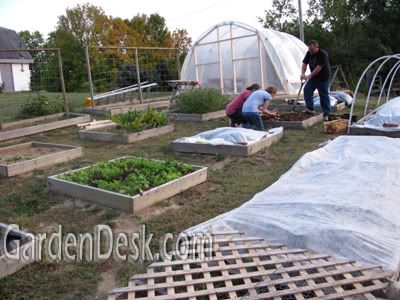
Here we are digging potatoes with the hoop house in the background.
By the way, we finally tipped over our potato garbage can so I will be writing about it soon. The girls had fun with that too. It is so great to garden together as a family!

